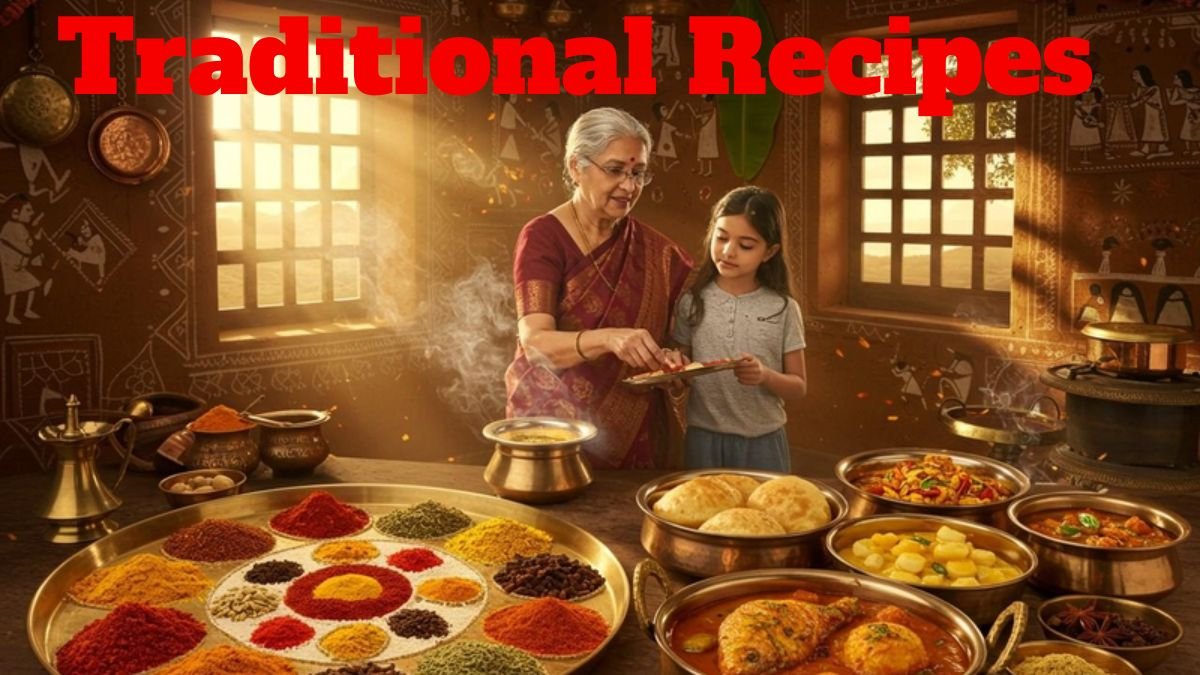In our lives, food is not just a source of filling, but it is a living part of our culture, family, tradition and experience. There are some dishes that become even more delicious, deep and nutritious with time. Just like a good wine matures over time, some traditional recipes become even more delicious with the years.
There are many recipes in India and around the world that need time, patience and proper care. This process is what makes them special – their taste, their history, and their nutrition.
In this article, we will discuss some such recipes that not only improve in taste with time but also take forward our heritage, tradition and knowledge. Let us know why these dishes are called “better with time” and what we can learn from them.
Pickles – The taste of time, the fragrance of patience
Pickles are perhaps the most popular traditional recipe of India that becomes even more delicious with time. Mango pickle, lemon pickle, chilli pickle – different method, different taste in every home.
Why does the taste increase?
- The mixture of spices and the balance of oil in pickles get well absorbed in the fruit or vegetable over time.
- Gradually, the fibers of the fruit mix with the spices and develop spicy, sour, sweet and salty tastes.
- If stored properly, pickles become thicker, tastier and more nutritious from 6 months to several years.
Cultural significance
- Pickles are not just food, they are the identity of a family.
- Grandmother’s old pickles contain years of experience and tradition.
- Pickles are inevitably served on festivals, weddings and special occasions.
Lesson: Patience, tradition and labor done in the right way bring changes in taste over time.
Sauerkraut – Europe’s fermentation tradition
Sauerkraut is a European dish made from cabbage which has to undergo a fermentation process for several weeks. It becomes sour in taste, slightly crispy and extremely nutritious.
How does this happen and why does the taste change?
- Cabbage is mixed with salt and kept in a closed container.
- Over time, natural fermentation produces lactic acid which gives it a sour taste.
- The more time is given, the deeper and more balanced the taste emerges.
Health benefits
- Being rich in probiotics, it helps in digestion.
- Increases immunity.
- Traditionally used in cold countries to give energy and warmth to the body.
Lesson: Respecting the process of nature and giving time is beneficial for both health and taste.
Idli yeast – time brings fluffy and soft taste
Idli is a popular breakfast of South India. To make it, a mixture of rice and urad dal is soaked overnight, ground and cooked with yeast.
Why does the taste increase?
- When the mixture is kept overnight, the natural yeast in it becomes active.
- This process creates a slight acidity in the mixture which makes the idlis soft and tasty.
- The more the temperature and time is right, the fluffier and lighter the idlis become.
Tradition
- In every household in South India, idli mixture is prepared and used the next day.
- This tradition is still alive in festivals, pujas, and everyday breakfast.
Learning: Giving the right time and letting nature help the process progress makes for quality food.
Dahi – Simple but matures with time
Dahi may seem like a simple dish, but it develops layers of flavour over time.
Why does the taste change?
- Fresh dahi is mild and sweet.
- As it sets, it gets sour and thicker.
- Sometimes dahi is stored for two days or more which enhances both its taste and potency.
Uses
- Curd is used in raita, kadhi, lassi, pulao and many traditional dishes.
- Old curd is also used in cooking vegetables which enhances the taste.
Lesson: Adding time and patience to even the simplest of things can change both its form and use.
Cauliflower Pickle – Rich Blend of Spices
Cauliflower pickle is made especially in winters and gains its flavour and depth with time.
Process
- Fresh cauliflower, mustard oil, spices and lemon juice are mixed and stored in a closed jar.
- Over time the cauliflower combines with the spices to develop a tangy, sour and slightly sweet flavour.
Development of Flavour
- After 1 month it starts to taste,
- after 3 months its balance matures,
- after 6 months it provides a rich and depth of flavour.
Lesson: Flavour develops with time and with patience we can make anything simple special.
A Taste of Heritage: Why These Recipes Are Priceless
All these recipes have one thing in common – patience, tradition, and proper care.
- These dishes remind us that there is a story behind every taste.
- These recipes are passed down from generation to generation in families.
- The process of making them involves time, attention, and love.
- These dishes teach us to trust the process rather than the desire for instant results.
A union of taste and wisdom
Recipes that have evolved over time not only give taste, but also teach the art of living.
- The importance of patience
- Connected with tradition
- Consideration of health and nutrition
- Opportunity to spend time with family
- Understanding the processes of nature
Final thoughts
Traditional recipes that have evolved over time tell us that beauty and depth in life can only be found through new experimentsSometimes the food prepared with age-old methods, time and care is the most delicious and healthy.
So the next time you open a jar of pickles, set the curds, or ferment the idlis — know that you are not just cooking a meal, but carrying forward your family’s tradition, experience and wisdom.
Every dish prepared with patience not only becomes rich in taste but also invaluable in relationships, experience and legacy.

